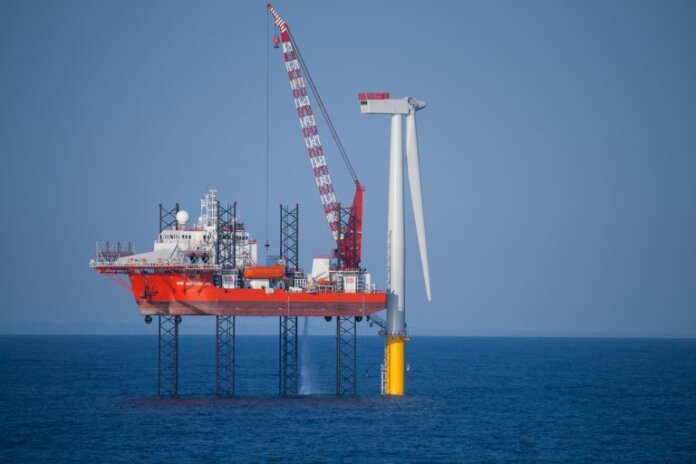The Ocean Renewable Energy Action Coalition (OREAC) has unveiled its plans for attaining 1,400 GW of offshore wind globally by 2050 to drive decarbonization and a green economic recovery from the COVID-19 crisis.
This goal goes beyond current offshore wind forecasts but is entirely achievable considering the resource potential, technology innovation and government desire to position offshore wind at the center of the global energy transition.
OREAC is spearheaded by Ørsted and Equinor, and includes other major players in the global offshore wind industry: CWind, Global Marine Group, JERA, MHI Vestas, MingYang Smart Energy, Mainstream Renewable Power, Shell, Siemens Gamesa Renewable Energy, TenneT and GE Renewable Energy. Additional partner organizations include Global Wind Energy Council, World Resources Institute, UN Global Compact, the Chinese Wind Energy Association and Ocean Energy Systems.
A report commissioned by OREAC shows that ocean-based renewable energy, such as offshore wind, floating solar, tidal and wave power, could meet nearly 10% of the global annual greenhouse gas emissions reductions needed to remain on a Paris-compliant 1.5°C pathway in 2050. It estimates that up to 85% of this decarbonization potential will come from offshore wind. 1,400 GW of offshore wind would power one-tenth of global electricity demand.
“In a short period of time, offshore wind has become an incredibly competitive solution for clean power generation across the world, with impressive cost reduction driving the industry’s growth by over 30% in the past decade and now outcompeting alternative fuels such as coal,” says Benj Sykes, head of market development, consenting and external affairs at Ørsted.
“Over 30 GW of capacity is already installed, yet this is just the tip of the iceberg for the massive growth potential of offshore wind. Working alongside other technologies – such as renewable hydrogen – could further bolster offshore wind’s ability to power economies across the world sustainably and at a low cost,” he adds.
The industry is ready to play an important role in powering a green recovery with ocean renewable energy at its heart. OREAC estimates that offshore wind could provide around 24 million years of employment (defined as full-time work for one person per calendar year with 260 working days) by 2050 – if the 1,400 GW vision is achieved. This job creation potential is calculated using IRENA data, and covers the full value chain of offshore wind, from procurement to construction to decommissioning.
Later this year, OREAC will launch its roadmap for 2050, which will outline the actions needed to support industry and policymakers in achieving the 1,400 GW vision. This report will serve as an important guiding document for industry, government and other ocean stakeholders to harness the power of ocean-based renewable energy to decarbonize our energy systems while contributing to the coexistence of ocean energy projects with other ocean uses and maintaining the integrity of the marine environment. The report is being delivered by BVG Associates.




